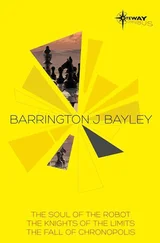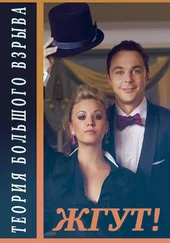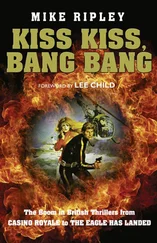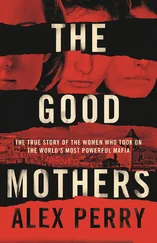Chapter 6, in examining the socialsocial discourse and politicalpolitical discourse conditions in which ageing artists and their texts are embedded, functions as a conclusion. As Linda and Michael HutcheonHutcheon, MichaelHutcheon, Linda assert, “[t]he internalization of societal attitudes toward aging presents challenges to artists, as it does to everyone who ages” (“Late Style(s)” 7). These challenges are outlined, and the results of the three previous chapters are related to both late-life creativity discourses and philosophicalphilosophy approaches to old age. Over the last decade, and as a result of the baby boomerbaby boomers generation growing old, issues relating to old age have shown an increasing presence in the public discourses, creating an atmosphere of ageismageism and pressure. Late-style theory and literary analysis have, to a certain extent, been complicit in this development. Thus, the chapter will conclude by suggesting a direction literary analysis could take in order to pursue an ethicalethics, non-ageist practice in its investigation of old age and late-life creativity.
2 Late Style through the Ages: From Criticism to Creative Practice
How, then, can we generalize about late style or elderly artists in a meaningful way? And more importantly, why bother?
(Hutcheon and Hutcheon, “Historicizing Late Style” 58)
2.1 Late Stylelate style or Old-Age Styleold-age style?
Indeed, why should we ‘bother’ to write about late style? Why should we discuss it and argue about it? Why define what it entails; why even use it as a simple label for ageing artists’ works? With these questions, the probably most famous literary quote about labelling comes to mind, a passage from Shakespeare’sShakespeare, William Romeo and Juliet : “What’s in a name? That which we call a rose / By any other name would smell as sweet” (2.2.1–2). This is what Juliet argues when she justifies her fondness for Romeo, who belongs to the wrong aristocratic family. Yet, Juliet’s attempt to diminish the importance of names is driven by passion. The critic’s work, however, should be stripped of emotion. Hence, any discussion of old age art must begin with a sober examination of its “names,” the terms that denote the phenomenon. Is it ‘late style,’ ‘old-age style,’ or just ‘latenesslateness’ that we believe to spot in works that were written, painted, or composed at a late stage in an artist’s career? Juliet would not mind the name as long as the ‘product’ satisfied her taste, and, likewise, critics could be tempted to laud late art without careful examination. But can there really be a ‘product’ without a concept attached to it? The roses that we recognize as such, the ones that smell sweetly, the ones we plant in a garden or tie into a bouquet or paint on a canvas, are species that have been bred over centuries, if not millennia, with the aim to make some desired features more salient. There are, of course, also non-bred, ‘natural’ roses, for example the rosa canina , the most common European wild rose, whose fruit is known as rose hip. Hardly anybody would think of this simple flower, though, when asked to think of a rose. Thus, when we describe the sweet smell and the appearance of a rose, we describe an artificially created aesthetic concept that has been imposed onto nature, and which is consequently reproduced by nature.
A similar development can be observed with regard to the concept of late style. Bred in art historyart history, musicologymusic and literary criticism, late style has become a critical commonplace, and consequently a rule of creative production itself (McMullan and Smiles, Introduction 3). As Gordon McMullanMcMullan, Gordon has persuasively shown, late style, as it is perceived today, originated as a critical concept based on the “biological thought of certain German romantic philosophersphilosophyromanticism” (2) and was imposed on Shakespeare’sShakespeare, William late plays in the second half of the 19 thcentury, for instance by the Irish critic Edward DowdenDowden, Edward (16).1 As a result of the pervasive critical discourse of lateness, “at least in Anglophone culture, […] writers [would] self-consciously […] look to Shakespeare for precedents for their own late work” (5). The rose bred in theory had begun to reproduce itself independently within literature. Yet, this is not to say that late style is a natural result of the physical reality of ageing. Rather, it is a socialsocial discourse product. In other words, authors develop a late style because they know that the concept exists. They are influenced less by their own ageing than by the scholarly and popular discourses about late-life creativity.
The history of critical receptionreception has generated distinct ideas of old-age art and late-life creativity. Shakespeare’s Prospero, Monet’sMonet, Claude water-lily paintings, and Beethoven’sBeethoven, Ludwig van Great Fugue have come to stand for late style in literature, paintingpainting, and musicmusic, respectively. Theodor W. Adorno’sAdorno, Theodor W. seminal work on BeethovenBeethoven, Ludwig van around the middle of the twentieth century took the concept out of its critical niche and made it popular, and Edward SaidSaid, Edward certainly added further recognition to it half a century later. Yet, as is the case with Juliet’s rose, however much one foregrounds the sweetness of its smell and the beauty of its bloom, one cannot help noticing the thorns, too. The theory of old age art seems to be caught in restrictive and simplifying binaries: the declinedecline or culmination of the artist’s skills; the foregrounding of either deathdeath or continuitycontinuity in his or her works; the conflict between subjectivitysubjectivity and conventionconvention in their production. One could continue: art vs. reality, nature vs. historyhistory, and resignation vs. rebellionrebellion are further oppositions against which products of old age creativity can be gauged in a structuralist manner. Indeed, Linda HutcheonHutcheon, Linda and Michael HutcheonHutcheon, Michael, in their article “Late Style(s): the Ageism of the Singular,” caution against such clichés and ask: “[H]ow useful is this entire unstable concept of late stylelate style when it can be defined in such contradictory fashion […]?” (10).
Indeed, if one analyzes texts by ageing authors with these binaries in mind, Hutcheon and Hutcheon’s statement that “[c]ritics find […] what they seek to find” (9) becomes all too true. It should not be too difficult to come up with a description of a certain artist’s late phaselate phase, and, if inclined, one can draw parallels between artists and thus arrive at a set of late-style universalsuniversal late style. One might discover, for instance, that the ‘roses of late art’ are usually paler than fresh ones, that they grow longer (or more, or fewer) thorns, that their stems are thinner or thicker and their leaves of a darker or lighter green. What one does not learn, however, is why this is so. As long as one works with such binary oppositions – even if just using them as opposite poles of a cline along which to place particular works of art – one will gain little insight into the forces that shape the production of late style. From the point of view of ageing studies, particularly its philosophicalphilosophy and sociological branches, old age art is relevant mainly because it is an indicator of underlying assumptions about old age creativity, that is, the belief systems that condition late style in the first place. In other words, the late rose’s appearance is of interest because it should show us why it grew in this particular way. This is a question that has largely remained unexplored.
Читать дальше












